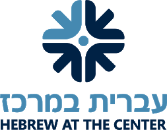Education and Remembrance on Yom HaShoah, Holocaust Remembrance Day
April 21, 2020 by
In observance of Yom HaShoah, Holocaust Remembrance Day, MILTON middle school students participated in a special ceremony, prayed together, lit candles in memory of victims of the Holocaust, read poems and excerpts from books and essays, drafter their own poems, songs, and reflections. We are sharing a few examples from the students’ learning in their Hebrew and Judaic Studies classes as well as from the special middle school service in which we said tehillim, shared special prayers, and student volunteers lit candles and read inspiring quotes from Holocaust survivors. Thank you to all the teachers for creating these important opportunities for learning, connection, reflection and commemoration.






